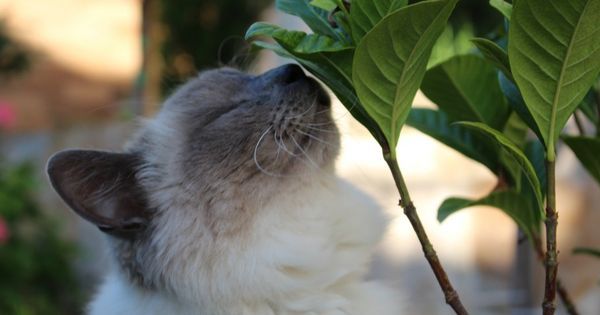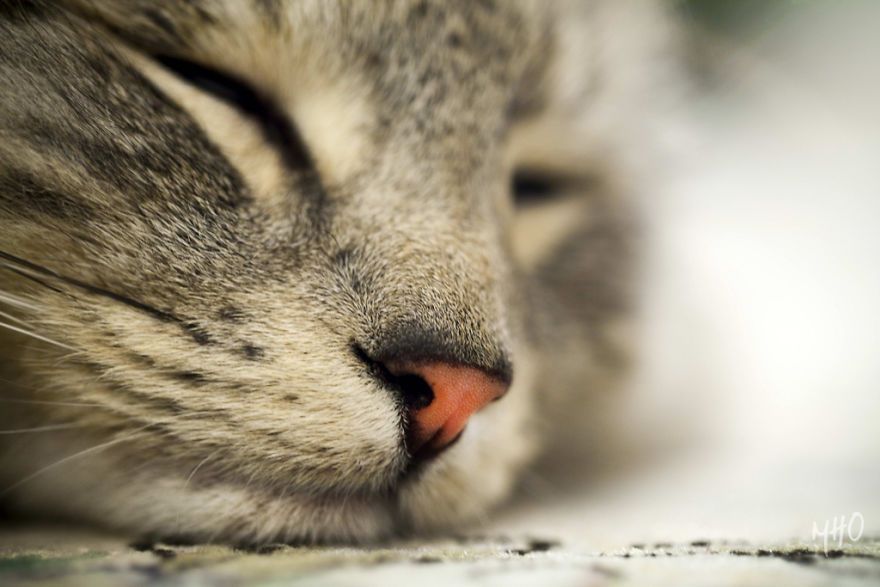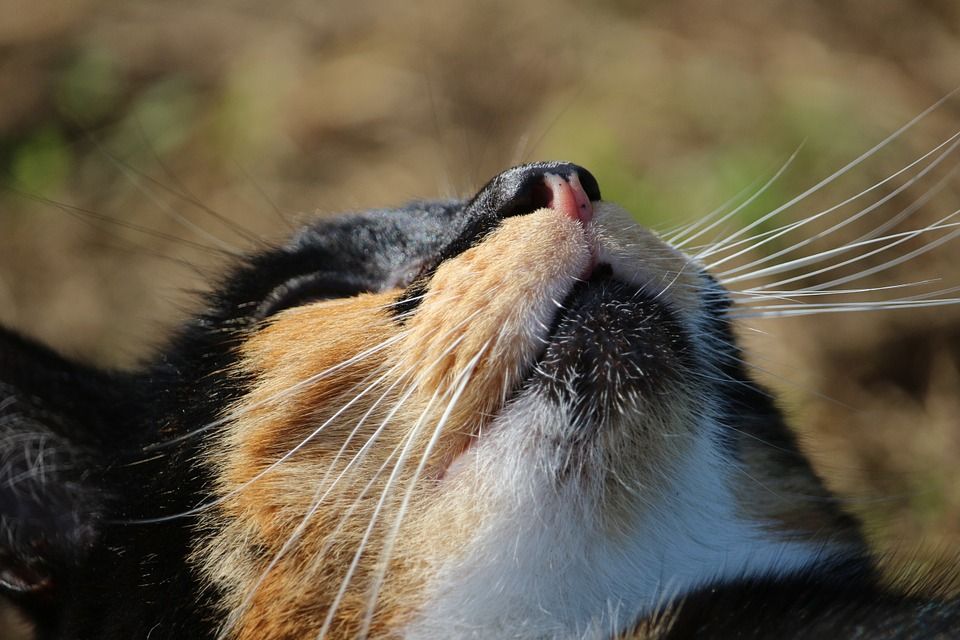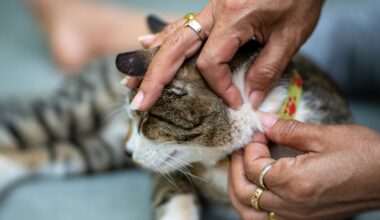Cats’ noses may change in temperature and moisture levels throughout the day. Some cats have naturally drier noses than others. This is why it is essential to know how normal their noses are for your particular kitty.
We look at what could be causing this, like your cat’s environment or the fact that it licks and drinks a lot. We also discuss how cats use their wet noses to maintain healthy body temperatures and enhance their sense of smell.
By the end of this article, you will be an expert in all aspects of a wet cat nose. So regardless of whether you’re dealing with a kitten’s nose wet or an adult cat’s nose wet, you’ll better understand why this is happening and how to care for your cat’s nose.
Cats’ noses can be wet for various reasons, and it’s essential to understand what’s normal and what’s not. Here are six main reasons why your cat’s nose might be wet:
1. Your Cat’s Environment

The environment in which your cat lives can directly affect the wetness of its nose. When temperatures and humidity rise, your cat’s nose will become wetter as they breathe in the water particles. Conversely, cold, dry, or artificial air can draw moisture from your cat’s nose, resulting in a dry and sometimes cracked nose. It is essential to know where your cat lives and how that might affect its nose.
If you keep your home too warm, your cat may become too hot and need help regulating their body temperature. That wetness on your cat’s nose is mainly made up of sweat, which helps them stay cool. Cats don’t sweat all over their bodies as humans do, so their noses perform an essential function in regulating their body temperature.
They also sweat through their paw pads, which is why your cat might leave wet footprints on a hot day. A change in the environment can lead to other issues. Dust and pollen from outside can irritate your cat’s eyes and cause them to produce extra tears, which drain down to the nose and mouth through the nasolacrimal duct.
If your cat is sick or has allergies, you may notice that its nose is more wet than usual. It’s essential to monitor your cat’s environment and ensure it is suitable for them. Check your home’s temperature and ensure it is comfortable for your cat.
2. Your Cat Was Hydrating
Your cat’s nose getting wet from drinking is normal. However, keeping an eye on your cat’s water intake is essential. How much water a cat drinks depends on its age, how active it is, and how hot it is where it lives.
If the weather is hot and humid, your cat will likely drink more water to stay hydrated, and their nose will be wetter than usual. You may also notice your cat licking its nose after drinking. This is normal behavior and helps spread the moisture evenly across their nose.
Additionally, when your cat licks their nose, it helps them cool down, as cats don’t sweat from their bodies like humans. It’s essential to make sure your cat has access to fresh, clean water at all times, especially in the warmer months. Not only does water help their noses stay wet, but it also helps your cat stay healthy and hydrated.
You can keep your cat’s water bowl full by setting up a pet water fountain that constantly filters and circulates water. Not only will this help keep your cat’s nose wet, but it will also encourage it to drink more, as running water is more enticing than a still bowl. It’s also important to watch how much water your cat drinks and ensure it only drinks what it needs.
3. Your Cat Was Licking Its Nose

Cats can get their noses wet by licking them during grooming. Their noses follow the trail of their tongues, gathering moisture from the saliva. This damp nose is typically short-lived and will dry out quickly, though cats may try to get rid of the water by licking.
This will keep the nose moist for a bit longer. Licking is one of the most common causes of a cat’s wet nose. Cats groom themselves with their tongues, and their noses follow the trail of their tongues, gathering moisture from the saliva left behind. This kind of wet nose is short-lived and will usually dry out quickly.
However, cats may try to get rid of the moisture by licking their snouts. This will keep the nose moist for a while longer. Licking is not only a cause of a wet nose in cats, but it also serves several other functions. Grooming is essential for cats to keep their fur clean and free of parasites and dirt.
It’s also a way for them to remove odors and keep their coat looking shiny and healthy. Additionally, grooming helps cats reduce stress and feel more relaxed. Cats’ tongues are equipped with a specialized type of hair called papillae, which allows them to remove dirt and debris from their fur.
4. Your Cat is Cooling Off
Cooling is essential for a cat’s wet nose, as cats can’t sweat like humans. Instead, they rely on their noses to help keep their bodies cool and comfortable. When the temperature rises, the moisture on their snouts will evaporate, drawing heat away from their bodies.
This is why you might find your cat panting with its nose wet on a hot day. In addition to evaporative cooling, cats also sweat through their paw pads. This is why you might find your cat leaving wet footprints on a hot day. The warm air and their weight on the floor cause the moisture in their paw pads to be released.
Cats also have a third source of cooling: their breath. When cats breathe, their noses absorb water particles, drenching them. This also helps to keep their bodies cool as the moisture evaporates and draws heat away from them. This is why cats may have wet noses in humid environments.
Cats have some remarkable tricks up their sleeves when it comes to keeping cool. Keeping their noses moist allows cats to regulate their body temperature and stay cool in hot weather. But this moisture could be drawn away from the nose on a cold day, leaving it dry and cracked. So, it’s essential to keep an eye on your cat’s nose and ensure it doesn’t get too dry.
5. Your Cat Has Tears in the Nose

Cats cannot sweat from anywhere, but the pads of their feet and noses are vital in helping them stay cool in hot weather. The moisture on their snouts will evaporate, helping to cool their bodies. This is why you may see your cat’s nose become wetter in hot weather.
Tears can also cause a damp nose if your cat suffers from allergies or an illness. Allergens can cause inflammation of the eyes and the production of tears, and the excess fluid can drain into the nose. Other symptoms like sniffling, sneezing, and watery eyes usually accompany this wetness. If your cat shows these symptoms, it’s essential to take them to the vet to get them checked out.
In addition to helping to cool your cat, a wet nose can enhance its sense of smell. The moisture on your cat’s nose helps to trap and hold onto scent particles, allowing them to get a better whiff of something. This is why a cat’s sense of smell is so much more acute than that of humans.
It’s essential to keep an eye on your cat’s nose, whether wet or dry, as any sudden change in moisture levels could indicate an underlying illness. If your cat’s nose is constantly wetter than usual, you must take them to the vet for a check-up.
6. Your Cat May Have Upper Respiratory Infections
Like humans, cats can get upper respiratory infections that cause a runny nose, coughing, and sneezing, leading to a wet snout. Many bacteria and viruses can cause these infections, like the feline herpes virus and the feline chlamydia bacteria. These infections are marked by a nose that runs too much, sneezing, watery, red eyes, and a bubbly, colored discharge from the nose.
A runny nose could be caused by an allergy to food, litter, or something else in the environment. Speaking to a veterinarian and discussing the symptoms and daily surroundings is essential to identify if your cat has an allergy. Upper respiratory infections can be a significant source of discomfort for cats and often lead to wet noses.
These infections can show up in different ways. They are caused by bacteria and viruses, like the feline herpes virus or the feline chlamydia bacteria. A runny nose, sneezing, watery and red eyes, and bubbly, colored nasal discharge could all be symptoms. If your cat exhibits any of these symptoms, it is vital to take them to the vet immediately.
Not only can upper respiratory infections cause discomfort and distress for your cat, but they can also become severe if not treated. In the worst cases, cats can lose a lot of water, have trouble breathing, and get sick with pneumonia.
Final Thoughts
In conclusion, a cat’s nose can be wet for various reasons. Most of the time, your cat’s tears or saliva are the cause. If your cat has allergies or is sick, it may also be crying. Sweating is also a natural way cats regulate their body temperature.
On the other hand, a dry nose is usually due to cold, dry air. To keep your cat’s nose moist, give it a lot of water and ensure they live in a humid place. Pay attention to changes in your cat’s nose, and contact your vet if you notice anything out of the ordinary. With these tips, you can help ensure your cat’s nose stays wet and healthy.
Further Reading






